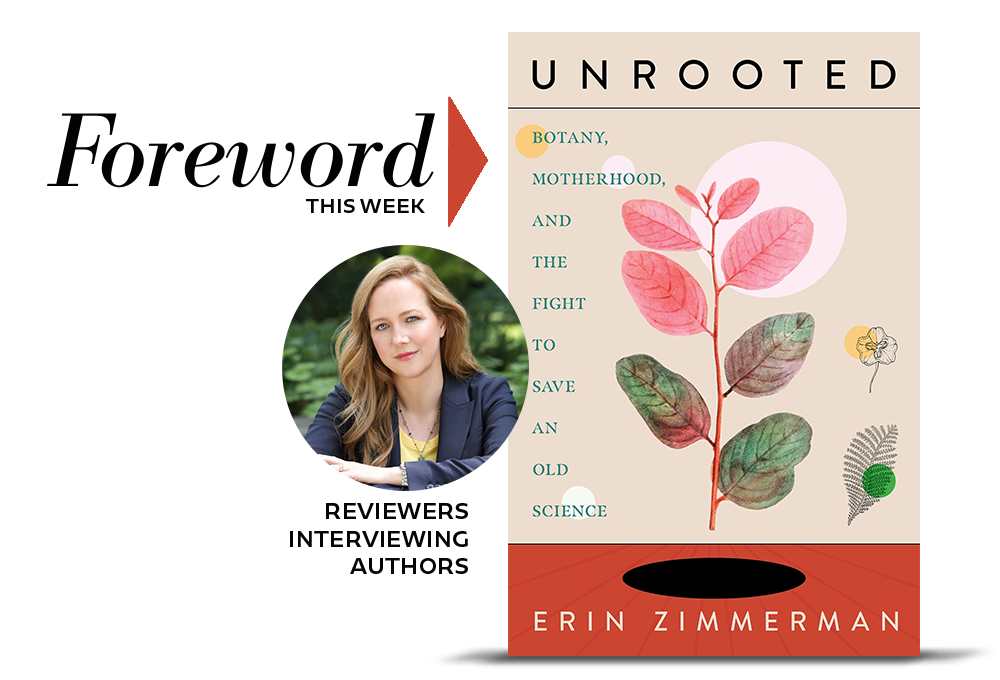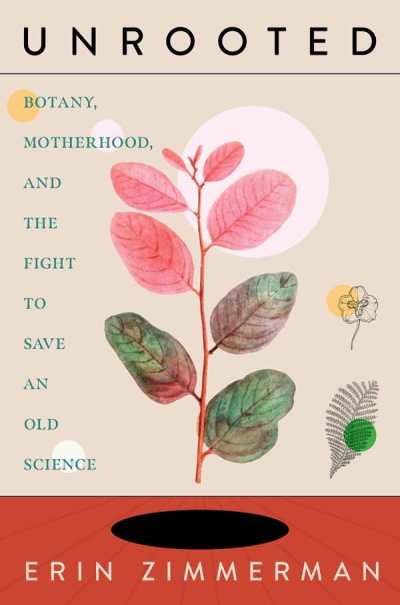Talking Orchids and Biases Against Mothers in Research Labs with Erin Zimmerman, Author of Unrooted

“I’d say that illustrating a plant requires looking at it more holistically than studying it scientifically generally does. It forces you to see and understand how the different elements come together, rather than just examining them individually, and you end up knowing the plant’s form better for having drawn it.’’—Erin Zimmerman
Forgive us for using today’s topic of botany as a segue to talk about … wait for it—the baldfaced fact that some invasive species actually benefit the environment. There! We said it!
Not all invasives, of course, but for the longest time, even suggesting that some weren’t as bad as others surely would have gotten you kicked out of an herbal-gin-sipping botanists’ happy hour.
Not until 2015 did members of the Invasive Species Specialist Group summon the courage to create what’s known as EICAT, the Environmental Impact Classification for Alien Taxa, as a framework to study the negative effects caused by non-native species. They were simply being realistic because fighting these species can be expensive, while global trade is continually introducing new organisms, so a better battle plan was needed. EICAT provided scientists with the tools to measure the impact of each species.
To be sure, it’s still a contentious subject but a recent survey of nearly 700 invasion scientists found that most (76 percent) were okay with regulating non-native species as innocent until proven guilty. More than 50 percent would like to see invasiveness defined both by impact and spread, in addition to acknowledging that they may have biological benefits.

There is no doubt that some invasive species have done incredible damage. Indeed, many extinctions in the past have been caused by invasions. But these let’s-follow-the-facts conversations are all about reasonable, rational, and data-driven science.
Moving on to this fantastic conversation between Meg Nola and botanist Erin Zimmerman, author of Unrooted: Botany, Motherhood, and the Fight to Save an Old Science, which earned a starred review from Meg in Foreword’s May/June issue.
When you were eighteen, you chose physics as your college field of study—because physics was what your father had studied, and you hoped that the choice would “please all the people who kept telling me I should do something special.” But you found yourself struggling with the coursework and feeling generally uninspired, until you bought an orchid from a grocery store. How did that moth orchid change your life?
It’s funny how such a small moment of serendipity can alter your life’s path. As a farm kid, I’d grown up around plants, of course, but I’d never seen one so different and so enchanting as that orchid. It caught me at a receptive time, because I sensed I wasn’t quite on the right track as I struggled through my physics degree. I felt like I needed to learn all about orchids and why they looked like that, and to just be near these things. In pursuing that interest, I started to learn about other unique plants, and eventually, I learned all these fascinating things about even the plants we’d consider common, and before I knew it, I was an obsessed botanist who wanted to know everything about plants. Orchids were my gateway drug.
You note how when you were taking part in what you call “Botany Bootcamp,” doing doctorate research at the Chicago Botanic Garden, that all the labs are “set up like a sort of aquarium.” The public can actually see the scientists at work, and you made a point of smiling at and interacting with visiting groups of tourists and schoolchildren. You also note that as a “twentysomething with scarlet-dyed hair and a nose piercing,” you might have challenged their preconceived notions of what a plant scientist looks like. Before you entered the field, what would your perception of a plant scientist have been?
I guess my mental picture of a scientist before that point was one that a lot of us grew up with (though I think that’s changing now)—that of a staid older white man. And certainly that’s one valid representation of a scientist, but the reality is much more diverse in every way. I’m so happy to see that we’re starting to have more realistic depictions in the media of the breadth of people who do research, so we don’t have our conception of what scientists look like tied up in this sort of outdated homogeneity. My work at the Chicago Botanic Garden was a while ago now, but there were a lot of children touring the place, and it makes me giddy to think that someone’s childhood mental picture of a plant scientist might be me and my loud fashion choices.
In the book you write about how you accepted a postdoctoral position at a Canadian governmental research facility when you were pregnant with your first child. As the pregnancy progressed, your coworkers seemed to become less accommodating—from minor “digs” about pregnancy brain fog, to suggestions that you wouldn’t be able to competently do your job after the baby was born. And after your daughter was born, there were additional issues regarding your work schedule and even your request for a private space to pump breast milk. Along with the physical and emotional demands of having children, this increased stress and lack of flexibility has led to what you call a “haemorrhage of women from the sciences.” How can the situation change for the better?
There are a lot of small, individual measures that can be put in place to make balancing parenting and research more manageable for women. Things like dedicated pumping spaces, flexible hours, work-from-home options, and childcare at conferences. And these are important. But I also don’t think they’re enough on their own. There needs to be a cultural shift wherein having childcare responsibilities isn’t seen as something that diminishes a worker’s value or dedication, but as a normal and expected part of human life. There needs to be a way of accounting for gaps and slowdowns in women’s careers that doesn’t permanently disadvantage them for having been involved parents. It’s a major paradigm shift that needs to happen—and not only in science—and it starts with realizing just how many talented female scientists are being lost because of this. The numbers point to upwards of 40 percent in the United States, which is staggering.
How has Charles Darwin been a continuing source of inspiration for you?
Charles Darwin is pretty unique among the people we think of as explorer-naturalists in that, after his single big adventure aboard the Beagle, he never left the country of his birth ever again. His poor health and introverted nature kept him tied to his rural home. Yet he made his greatest contributions from that place. He reached out to the world through his letters, corresponding with other scientists and arranging for specimens to be sent to him, but he made his scientific observations and developed his theory from home. I think a lot of people, as they get older and take on family and work responsibilities, feel they aren’t as free to see the world and chase their goals as perhaps they once were. I find it inspiring to look at Darwin and think that it’s possible to do amazing things and change the world even if you’re not able to go on these daring adventures. It’s comforting.
Unrooted includes wonderful historical information about botanical illustration, from the ancient Greeks to contemporary times. How does your own illustration work both differ from and enhance your scientific research?
I’d say that illustrating a plant requires looking at it more holistically than studying it scientifically generally does. It forces you to see and understand how the different elements come together, rather than just examining them individually, and you end up knowing the plant’s form better for having drawn it. Illustrations enhance scientific studies because they allow us to emphasize important diagnostic characteristics that may have been very difficult to have show up on a photograph, or that may have been lost very early in a growing season, say. But we can draw them in a way that highlights them for people who need to understand the plant’s features.
Are you involved in any new projects that you can share?
Nothing new quite yet. I’m absolutely looking forward to jumping into my next book soon, and I have some ideas I’m tinkering with. But having written this last one concurrently with the birth and infancy of my twins, I want to enjoy having a moment to take a deep breath and not have multiple things on the go. I’m planning on taking just a bit of time to savour my children while they’re still little.
Meg Nola
